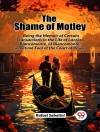In ‘The Wife of His Youth and Other Stories of the Color Line, and Selected Essays, ‘ Charles W. Chesnutt intricately weaves a tapestry of narratives that explore the complex interplay of race, identity, and social stratification in late 19th-century America. Using a realist style infused with dialect and keen psychological insight, Chesnutt confronts the nuances of colorism and the societal expectations for African Americans in a post-Civil War context. The collection showcases his ability to depict the personal struggles of individuals caught at the intersection of race and class, offering a poignant reflection on the persistent color line that defines social relations and personal choices. Charles W. Chesnutt, one of the first significant African American writers in the U.S., drew upon his own experiences as a mixed-race man in a predominantly white society. Having emerged from a background of both slavery and education, Chesnutt was profoundly influenced by the complexities of his identity. His literary career spanned a time of intense societal change, which informed his exploration of the dilemmas faced by African Americans navigating a prejudiced society. This collection is a must-read for scholars and general readers alike, as it not only illuminates the historical context of racial identity but also resonates with contemporary discussions of race and belonging. Chesnutt’s insightful essays complement his fictional narratives, offering a deeper understanding of the challenges and aspirations of African Americans, making this work an essential addition to any literary canon.
เกี่ยวกับผู้แต่ง
Charles Waddell Chesnutt (1858-1932) was an African American author, essayist, and civil rights activist, renowned for his pioneering role in American literature. His works frequently addressed the complex issues of racial identity and social inequality during the post-Civil War era. Born in Cleveland, Ohio, Chesnutt grew up in the racially charged atmosphere of the South, which profoundly influenced his literary creations. Chesnutt’s seminal collection, ‘The Wife of his Youth and Other Stories of the Color Line’ (1899), offers a poignant exploration of race and identity, revealing the arbitrary nature of the ‘color line’ and its consequences on individuals’ lives. A master of dialect and character portrayal, Chesnutt’s stories highlight the lived experiences of mixed-race individuals and African Americans navigating a society marred by segregation and prejudice. His narrative style and moral insight positioned him as a significant figure in the annals of American realism and the struggle for civil rights. By addressing the complexities of racial heritage and advocating social justice through the written word, Chesnutt’s contributions to American literature and culture are invaluable. His works remain a testament to the enduring power of literature as a vehicle for change and a lens through which to understand the human condition.












